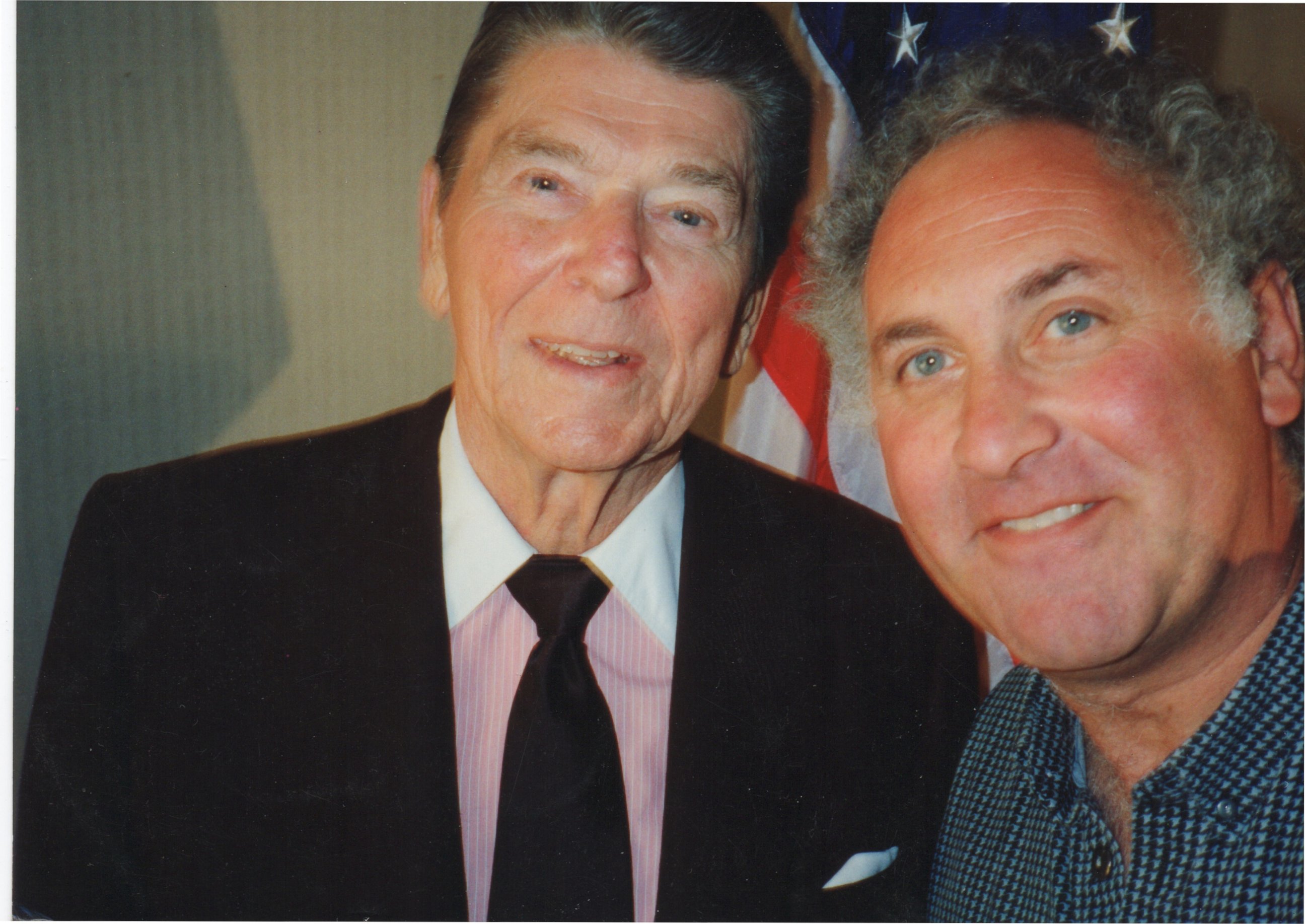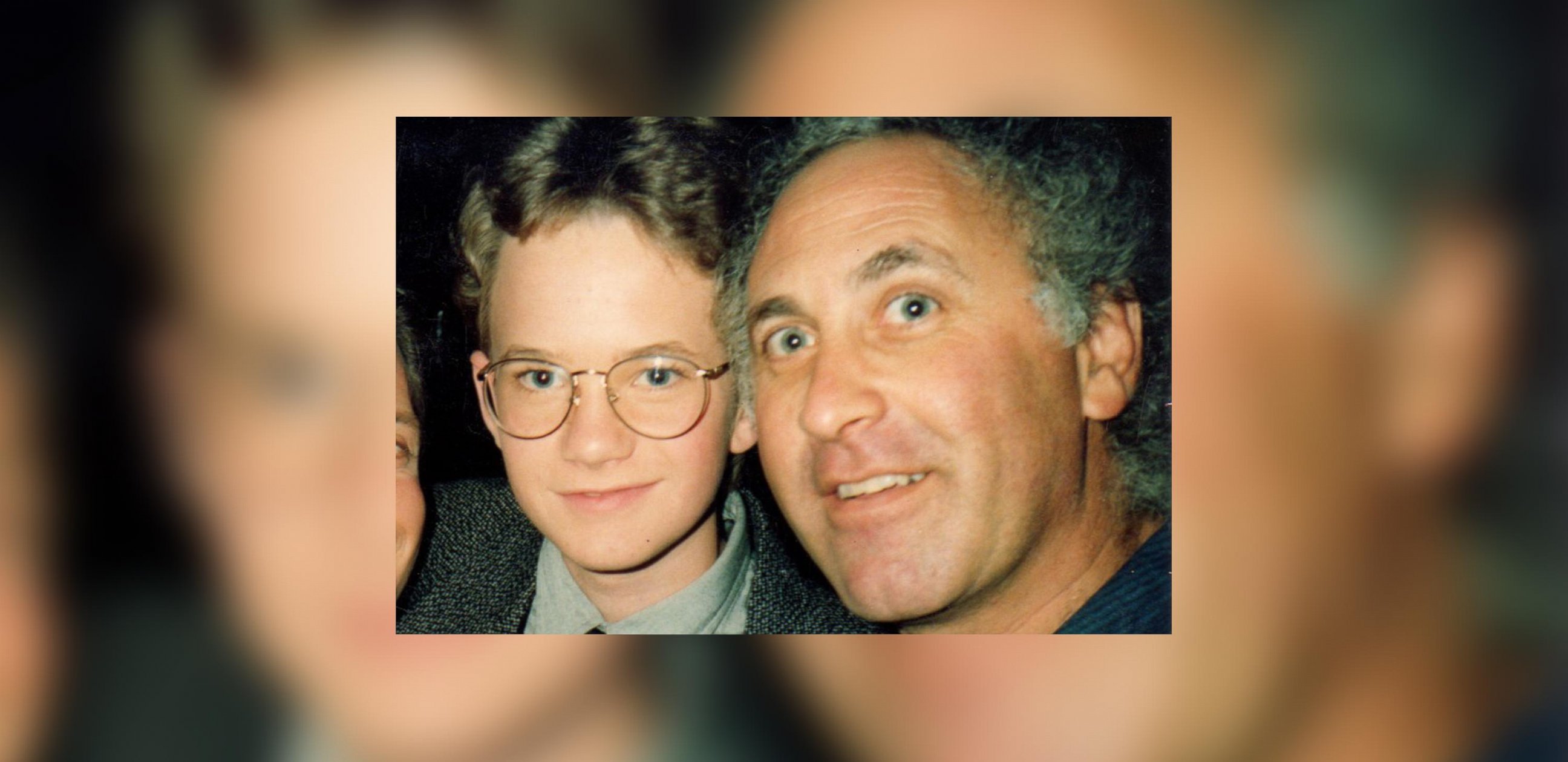Meet the Man Who May Have Launched the Selfie
Lester Wisbrod took his first selfie with Art Buchwald in 1981
— -- If you are so tired of the selfie craze that you could scream, you may want to direct your vocal chords towards a longtime cameraman from Los Angeles whose photos taken with an actual camera, not an iPhone, decades ago may have started the craze.
Lester Wisbrod was working as a freelance cameraman in 1981 when he found himself next to humorist Art Buchwald with his first-ever self-focusing camera. Instead of posing and asking someone else to take a photo, Wisbrod, now 67, stuck out his left hand with the camera, pulled Buchwald in close and snapped a pic.

“To do a selfie at the time, if you weren’t close enough together then the focus would miss you and that’s what happened,” Wisbrod told ABC News. “It didn’t work but I’ve since improved my skills, as has everyone else in the world.”
WATCH: Selfie Addiction Sign of a Self-Obsessed Generation?
Which City's the Selfie Capital of the World?
The Definitive Guide to Selfie Etiquette
For the next two decades, whenever Wisbrod found himself next to a celebrity while on the job, he would pull out his Canon camera, ask the celeb to smile and then reach out his arm to take the picture.
“It just started being a very normal, natural way to take a picture for me,” he said. “But I’d stick my arm up to take a picture and people would run up to grab the camera to take the photo and I’d have to dissuade them and say, ‘No, that’s not what I’m doing. Go away.”
Wisbrod estimates he took nearly 150 selfies with celebrities before he retired from showbiz in 2005. While most of the famous faces -– which include Jennifer Aniston, Clint Eastwood and Mike Tyson, just to name a few - simply smiled and posed, others, such as director Steven Spielberg and a former President, questioned what in the world Wisbrod was doing.
“President Reagan, when I took a picture with him around 1989 or 1990, he said, ‘Gosh I’ve never had my picture taken like that before,’” Wisbrod recalled.

It was nearly two decades later, as Wisbrod saw his way of taking photos – deemed “Lesters” by his family and friends - popularized by the likes of the Kardashians, politicians and then eventually every person with a camera phone, that he decided to lay claim to the photography art form he first launched.
“I saw them in TV commercials and in movies and I’d quietly gloat to myself, ‘Hmm, look what I started,” Wisbrod said. “And then I’d have friends emailing me saying, “Look what you started.”
Wisbrod, the married father of a 12-year-old son, compiled a video slideshow of his celebrity selfies and posted it to YouTube and shared it with the Los Angeles Times, which first reported the story.
“I thought, I better do something or else I’ll end up as road kill on the distant highway and not leave my son any legacy,” Wisbrod says in the video’s narration.

As for how Wisbrod himself has adapted to the growing selfie craze, he is still taking his “Lesters” but not with an iPhone and he has never posted a picture on Twitter or Instagram.
“I don’t keep up with the Kardashians,” he said. “And the iPhone is too hard to hold for a photo, there’s no grip. I now use a Canon G10.”
While Wisbrod acknowledges that the selfie is “part of the evolution of photography” that would have occurred with or without him, he does take umbrage with Oscar winner Susan Sarandon’s recent claim on Twitter that she and Geena Davis were the “inventors of the #selfie” because they posed for the first on-screen movie selfie in the 1991 film “Thelma and Louise.”
“She was wrong on both points, I’m sad to say, no I’m happy to say,’” Wisbrod said.
Wisbrod says Dennis Quaid was the first actor, as far as he knows, to bring the selfie to the big screen, in the 1987 film, “Innerspace,” costarring Meg Ryan and Martin Short.
“Dennis Quaid was about ready to get into a capsule and he grabs a Polaroid from a staffer and takes a selfie,” Wisbrod said. “Coincidentally, the guy who wrote the first script of that was a friend of mine.”
“I don’t know how that ended up in the movie,” he said. “Maybe it was me, maybe it wasn’t.”



